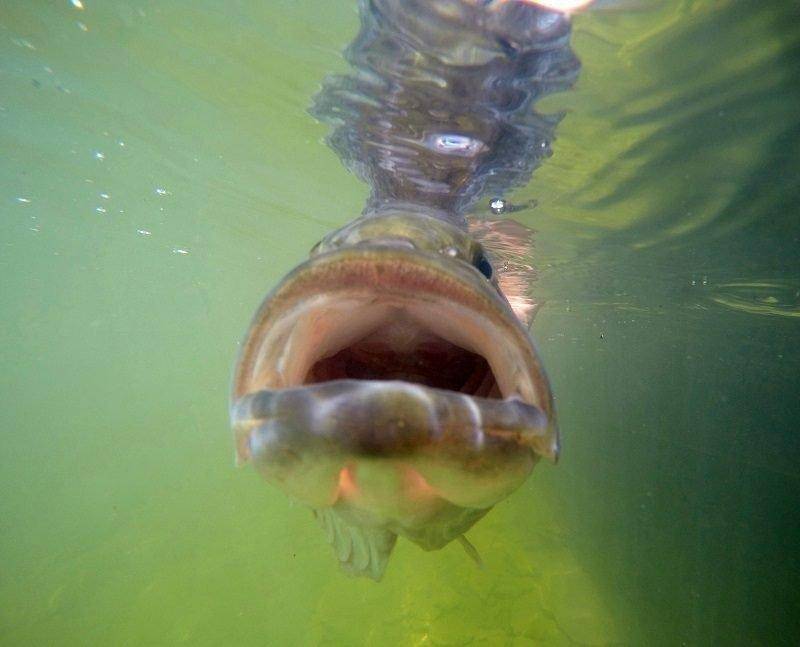DWR Press Release
Vernal — Big changes are in store for two fisheries in the Uintah Basin. Biologists are hoping to create the best largemouth bass fishery, and the best bluegill fishery, in the area.
The efforts will take time, though. Biologists hope the local community, especially anglers, will lend their support.
Pelican Lake
One of the target waters is Pelican Lake. The lake is about 25 miles southeast of Roosevelt.
At one time, Pelican Lake was among the best bluegill fishing waters in the West. The lake’s water quality and the health of its fish declined over time, however. Now, biologists with the Division of Wildlife Resources are taking action to bring it back.
Originally, a “restart” for the reservoir, in the form of a rotenone treatment, was set to occur in the fall of 2017. That treatment has been rescheduled for October 2018.
With such big changes in store at Pelican, an angler’s first (and second) question might be: When will fish go back into the lake? And when will they be big enough to catch?
Initially, biologists planned to take bluegill and largemouth bass from the lake and then restock the fish into the lake after the treatment was over. The presence of yellow grub in Pelican will prevent that from happening. Instead, biologists will use fish from Steinaker Reservoir.
“Fish in Steinaker Reservoir have also been reported to have yellow grub, but in far lower numbers,” says Trina Hedrick, DWR regional aquatics manager.
Instead of salvaging fish at Pelican Lake, the DWR has liberalized the bass and bluegill limits there. The liberalized limits—no limit on bluegill and 12 largemouth bass a day—are now in effect and will likely remain in effect through 2018.
“Extending the rotenone treatment to fall 2018 gives anglers additional opportunities to harvest fish from Pelican Lake before the treatment occurs,” Hedrick says.
Steinaker Reservoir
The second target water is Steinaker Reservoir, about four miles north of Vernal.
The Bureau of Reclamation needs to repair the dam at Steinaker. To reach areas that need repair, and to do additional earthquake protection work, the reservoir will have to be completely drained of water.
The work at Steinaker should be completed in 2019. BOR managers will start draining the reservoir during the irrigation season in 2018.
Because the reservoir will be completely drained, the fish in the reservoir will be lost. “We aren’t happy about the anticipated water volume after the drawdown,” Hedrick says, “but we certainly understand the need to complete the work and ensure the safety of the dam and everyone downstream of the dam.”
During the summer of 2017, DWR biologists will take bluegill and largemouth bass from Steinaker. These fish will then be restocked at Steinaker and Pelican Lake once projects at both waters are completed.
In advance of the drawdown in 2018, the DWR has removed fish limits entirely at Steinaker. Removing the limits will give anglers two full years to harvest fish before the drawdown happens.
An emergency change, lifting the fish limits at Steinaker, goes into effect April 22.
“Taking and holding large bass and healthy bluegill will allow us to jumpstart populations at both waters,” Hedrick says. “Anglers can expect bluegill to bounce back at Pelican the year following the treatment. At Steinaker, bass and bluegill should bounce back shortly after the repairs are completed and the water level starts to come up.”
Hedrick says small numbers of adult largemouth bass will be placed in both waters. They won’t be restocked in large numbers, though, until the year after bluegill are stocked. That will give bluegill one reproductive cycle without many predators in the water. “Predation, a form of harvest, is good for controlling bluegill populations,” Hedrick says. “Bluegill are really prolific, so we don’t want them predator-free for too long.”
Hedrick expects growth rates to be faster than normal for a few years after the projects. It should still take at least two years, though, for newly hatched bluegill to reach six inches and largemouth bass to reach 12 inches in length.
For more information about the upcoming changes at Pelican Lake and Steinaker, call the DWR’s Northeastern Region office at 435-781-9453.

